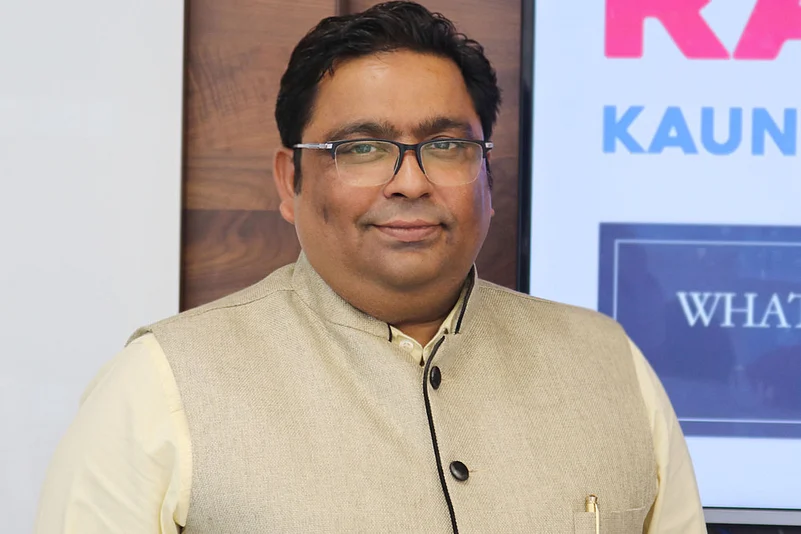2020 has been a roller coaster year for a financial Investor, lows in March and all-time high by the end of 2020, driven by record inflows form FII, highest ever quarterly profits (Q2) reported by Nifty 50 companies from doomsday that has no equivalent in the history to one of the fastest V shape recoveries of all time.
Presently Indian markets are at an all-time high, and the investors are befuddled to take their next step. The rally in markets has been broad-based, started with blue chips, and smartly caught up by mid-caps and small caps. This provides a great opportunity for an investor!
However, looking at the mutual funds' industry data in equity-oriented schemes (Equity and Equity oriented Hybrid Funds) for the last few months and especially in November 2020, it can be inferred that instead of smartly switching to great schemes, most have exited with the recovery of their investments or with marginal gains.
Markets at an all-time high, how should be an investor's approach – Equity Oriented Mutual Funds’ Investments prospective
If already Invested then Ideal time to review the portfolio, if you already have great funds kindly continue else don’t just exit or redeem instead consolidate the portfolio and SmartSwitch to great quality funds.
If fresh investment then stagger your investments in 12 to 18 months either through SIP or STP for averaging out the Investments at different market levels i.e. NAV , instead of lumpsum investment at one go.
Avoid too many funds, beyond a point the diversification reduces the performance of the portfolio, stick to 4 to 5 great quality schemes with growth option
Dividend reinvestment option attracts stamp duty on every reinvestment amount
The dividend pay-out option is tax-inefficient post removal of DDT and also the pay-out value keeps changing and at a time there may not be pay-out at all. If periodic pay-out is a must, then the growth option of the scheme to be selected and SWP can be set up so that there is consistency in the pay-out amount.
2. Avoid selecting mutual funds based upon past performance, past performance is already built in the NAV, Look at the present Quality of the portfolio.
There are very few great quality funds.
3. Once ascertained the quality of the portfolio of the scheme, check if it for Margin of Safety i.e. if the value for money – The intrinsic value of the fund portfolio is undervalued or fair valued or overvalued.
Simple principle, investments in quality schemes at fair or great NAV will deliver great returns, and investments in poor quality schemes and/or at poor NAV deliver poor returns.
This holds for both Equity and Debt Schemes.
There are very few great quality funds with Moderate (Fair Value) to High Margin (Great Value) of Safety even when markets are at an all-time high
4. Determine strength / resilience in volatility; Markets are volatile and carry risk therefore investments of mutual funds will fall from time to time based on market conditions, However, what's important is the strength of the portfolio of the scheme i.e. how quickly these investments can bounce back when the markets stabilise and goes up.
5. There is a tendency among retails investors to follow brands and names for selection of mutual funds schemes, kindly avoid!
Further investors should keep in mind while building a portfolio;
Debt mutual funds are to beat Small Savings / FD returns and not the Equity returns; should be realistic with the expectation of returns
Similarly, the expectation form equity mutual funds should be evaluated keeping in mind the risk-free returns (10-year G-Sec Returns) plus Inflation and reasonable risk premium
6. Once the funds and categories are identified and investment is made thereafter it becomes very important to periodically review the portfolio.
7. The frequency at which investments can be reviewed in 6 months to a year depending upon the objective, tenure, and the risk profile of the Investor so that there is no panic decision taken when markets turn unfavourable!
8. If all remains normal, then look at the portfolio churn ratio – if lower ratio that means the fund portfolio will change slowly and there is consistency and therefore the review can be once a year, however, it the ratio is very high then the constant review is required i.e. in 3 months because the quality of the portfolio can change rapidly and therefore the performance of the scheme.
9. If there is substantial underperformance viz a viz category as well as a benchmark for a couple of quarter, the fund needs review;
There remains inertia amongst retail investors, even if the toxic asset is recognised, retail investors wait for recovering the lost principal investment from the same funds wait till purchase price and it becomes a never-ending wait, it’s better to get out of the toxic funds at the earliest and invest into a great quality fund so that the chances of recovering loss and generate decent returns increases!
Happy investing and will have a great 2021!
The author is Head- RankMF, Samco Group



























